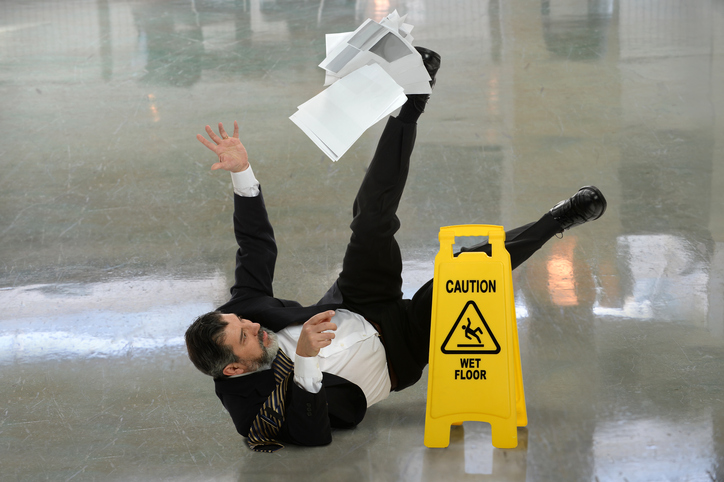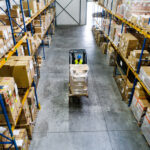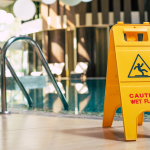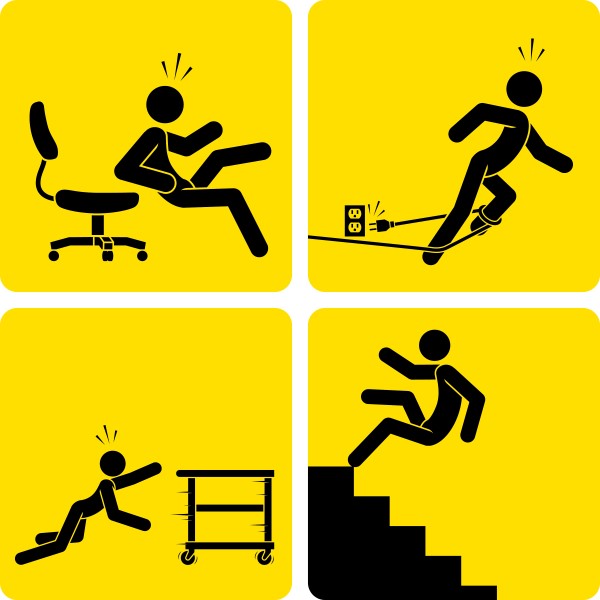William English, whose exhaustive research on slip resistance resulted in his creation of the Tribometer, a machine which can accurately measure how slippery a surface is, states in the first sentence of his textbook preface: “Falls are a big deal. They are the leading non-automotive cause of accidental death in America and are the primary initiator of violent deaths among the elderly” (Pedestrian Slip Resistance, 2003, p. vii). The National Safety Council supports English’s claim: “Slips, trips and falls are a major cause of preventable injury and deaths in the workplace; only motor vehicle incidents cause more worker fatalities.” English goes on to say that in public places, falls are a larger factor than all other types of accidents combined…but that they are the “dominant controllable workplace loss type” (p.1). And, the cost of these incidents is high. More than one million people go to the ER each year, the average cost being $30,000 to $40,000 according to the CDC (www.askadamskutner.com/).
When a slip and fall litigation case emerges, the argument frequently centers on one or both of the following culprits:
The unexpected:
Human beings naturally trust their environment; it is an inherently basic and reasonable expectation that the floors we walk on at work or home are level, stable, not overly slippery…safe. We “trust” them. When we walk down the office corridor or hallway, we do not have to stare at our feet or at the ground right in front of us; we typically look straight ahead, perhaps while conversing with a colleague next to us. We are not focused on how our feet are getting us from point A to point B (unless we are tightrope walkers in the circus). So, it follows that the unexpected (or “unseen”) is often the prime causation factor in a slip and fall. For example, we don’t expect there to be a puddle in the grocery store aisle that we must navigate as we survey the eye-level shelves for groceries; we trust that management maintains a safe, dry store where spills are swiftly cleaned up as soon as they occur. A better illustration of this concept might be walking on ice. We can walk on ice if we know it’s there – if it’s expected — because we step more slowly and deliberately, using more caution. However, if we unknowingly stroll onto a patch of ice without slowing down, we will likely lose our footing, slip and fall. Simple premise.
Liquids/floor treatments:
Floors which have been treated with the wrong or inferior chemicals, including finishes, stains or cleaning products — or when such substances have been misused – are routinely to blame for slips and falls. “The most common reason a floor may be slippery is that it simply has not been cleaned properly or as frequently as needed,” says Mike Englund, a professional cleaning trainer and product manager for Powr-Flite, a leading and innovative commercial floor care business for over 50 years (www.cleanlink.com/news/article/Slippery–Floors ). The use of the right tools, chemicals and equipment can eliminate many slip-and-fall hazards. Simply failing to clean mops or pails adequately, so that too much oily residue has built up, is one of the most common culprits. And good old water, from the bathroom tub to the rain tracked into the store, is to blame for countless accidents.
When considering home or workplace floors designed to minimize slips, textures are key. In looking at tile flooring, for example, peaks and valleys which protrude to help grab a shoe are most effective at increasing slip resistance. You will notice ridges in most kitchen, bathroom or workplace tile floors, because they are generally more superior to perfectly smooth ones in increasing slip resistance, especially when wet. When paving a sidewalk with cement, the workers will take a broom to the surface to increase slip resistance, rather than leaving it completely smooth before the concrete dries.
For more information on CED’s capabilities or to research other articles and publication, please visit www.cedtechnologies.com .






